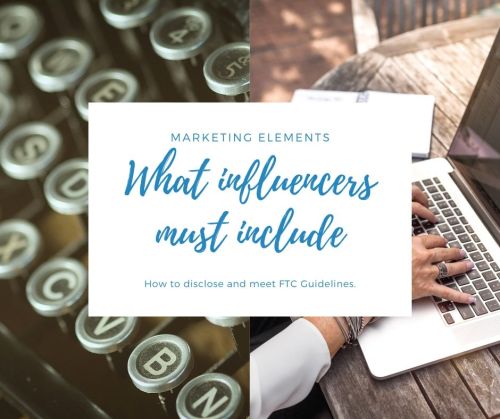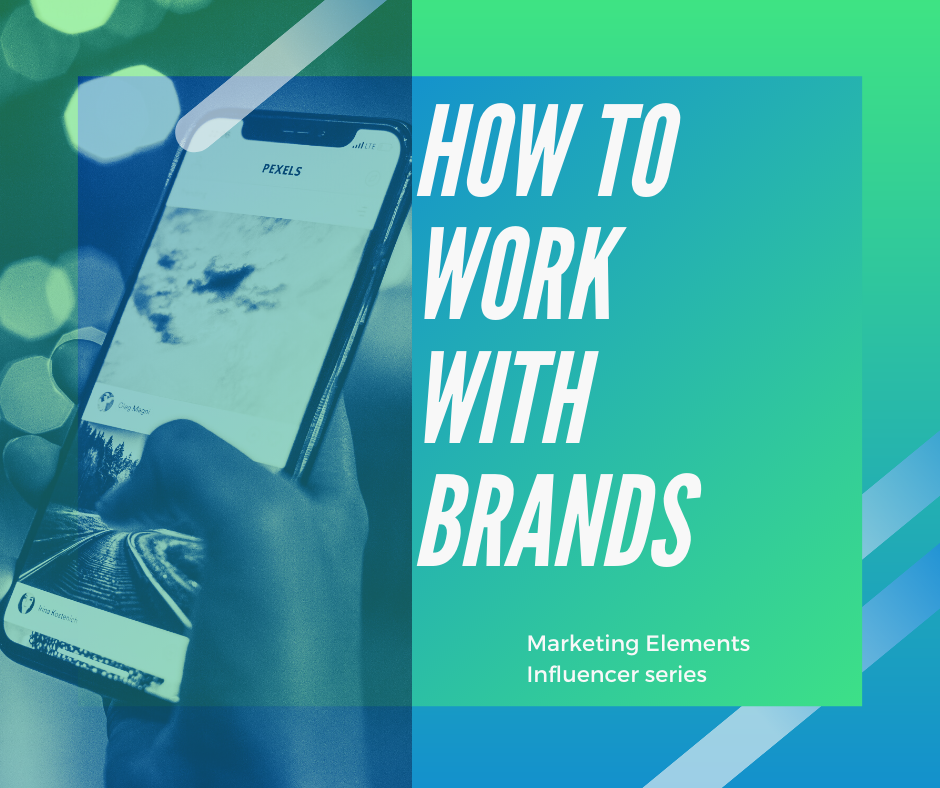
Working with Influencers has a lot of moving parts. You have to get them the product, getting the post up, then monitoring the analytics. However, there is one crucial thing all influencers must do when you work with them. That is they have to disclose that this is a paid post.
Disclosure may seem like a minor thing. However, brands can be fined by the FTC over $100,000 per violation. Note, that the fine is for the brands and not the influencer. So what can you do to make sure this happens?
- Put in the contract that disclosure has to be on every blog and social media post.
- Then check to make sure the influencer put the disclosure in the post if not contact the influencer and get them to put it in.
- If an influencer doesn’t respond to your emails/calls, rethink using them for future campaigns.
So what do you need to make sure that is included in disclosures? Here are the answers from the FTC site:
Is there special wording I have to use to make the disclosure?
No. The point is to give readers the essential information. A simple disclosure like “Company X gave me this product to try . . . .” will usually be effective.
Would a single disclosure on my home page that “many of the products I discuss on this site are provided to me free by their manufacturers” be enough?
A single disclosure on your home page doesn’t really do it because people visiting your site might read individual reviews or watch individual videos without seeing the disclosure on your home page.
If I upload a video to YouTube and that video requires a disclosure, can I just put the disclosure in the description that I upload together with the video?
No, because consumers can easily miss disclosures in the video description. Many people might watch the video without even seeing the description page, and those who do might not read the disclosure. The disclosure has the most chance of being clear and prominent if it’s included in the video itself. That’s not to say that you couldn’t have disclosures in both the video and the description.
What about a disclosure in the description of an Instagram post?
When people view Instagram streams on most smartphones, longer descriptions (currently more than two lines) are truncated, with only the beginning lines displayed. To see the rest, you have to click “more.” If an Instagram post makes an endorsement through the picture or the beginning lines of the description, any required disclosure should be presented without having to click “more.”
The social media platform I use has a built-in feature that allows me to disclose paid endorsements. Is it sufficient for me to rely on that tool?
Not necessarily. Just because a platform offers a feature like that is no guarantee it’s an effective way for influencers to disclose their material connection to a brand. It still depends on an evaluation of whether the tool clearly and conspicuously discloses the relevant connection. One factor the FTC will look to is placement. The disclosure should catch users’ attention and be placed where they aren’t likely to miss it. A key consideration is how users view the screen when using a particular platform. For example, on a photo platform, users paging through their streams will likely look at the eye-catching images. Therefore, a disclosure placed above a photo may not attract their attention. Similarly, a disclosure in the lower corner of a video could be too easy for users to overlook. Second, the disclosure should use a simple-to-read font with a contrasting background that makes it stand out. Third, the disclosure should be a worded in a way that’s understandable to the ordinary reader. Ambiguous phrases are likely to be confusing. For example, simply flagging that a post contains paid content might not be sufficient if the post mentions multiple brands and not all of the mentions were paid. The big-picture point is that the ultimate responsibility for clearly disclosing a material connection rests with the influencer and the brand – not the platform.
What about a platform like Twitter? How can I make a disclosure when my message is limited to 140 characters?
The FTC isn’t mandating the specific wording of disclosures. However, the same general principle – that people get the information they need to evaluate sponsored statements – applies across the board, regardless of the advertising medium. The words “Sponsored” and “Promotion” use only 9 characters. “Paid ad” only uses 7 characters. Starting a tweet with “Ad:” or “#ad” – which takes only 3 characters – would likely be effective.
You just talked about putting “#ad” at the beginning of a social media post. What about “#ad” at or near the end of a post?
We’re not necessarily saying that “#ad” has to be at the beginning of a post. The FTC does not dictate where you have to place the “#ad.” What the FTC will look at is whether it is easily noticed and understood. So, although we aren’t saying it has to be at the beginning, it’s less likely to be effective in the middle or at the end. Indeed, if #ad is mixed in with links or other hashtags at the end, some readers may just skip over all of that stuff.
FTC – The FTC’s Endorsement Guides: What People Are Asking – https://www.ftc.gov/tips-advice/business-center/guidance/ftcs-endorsement-guides-what-people-are-asking



